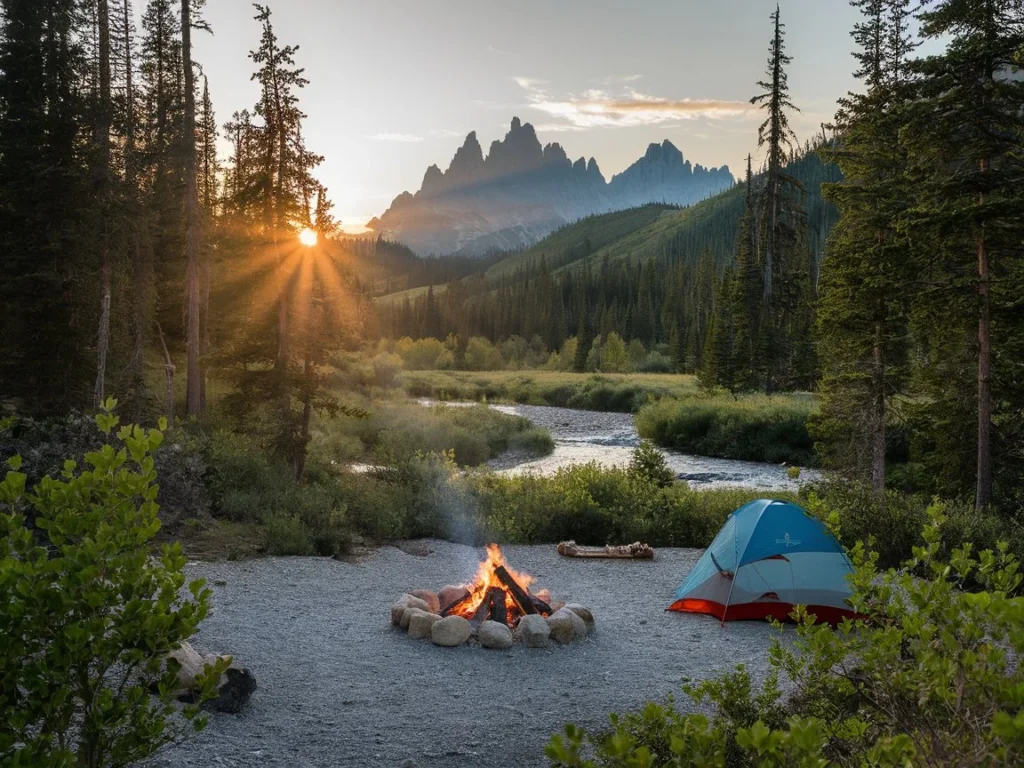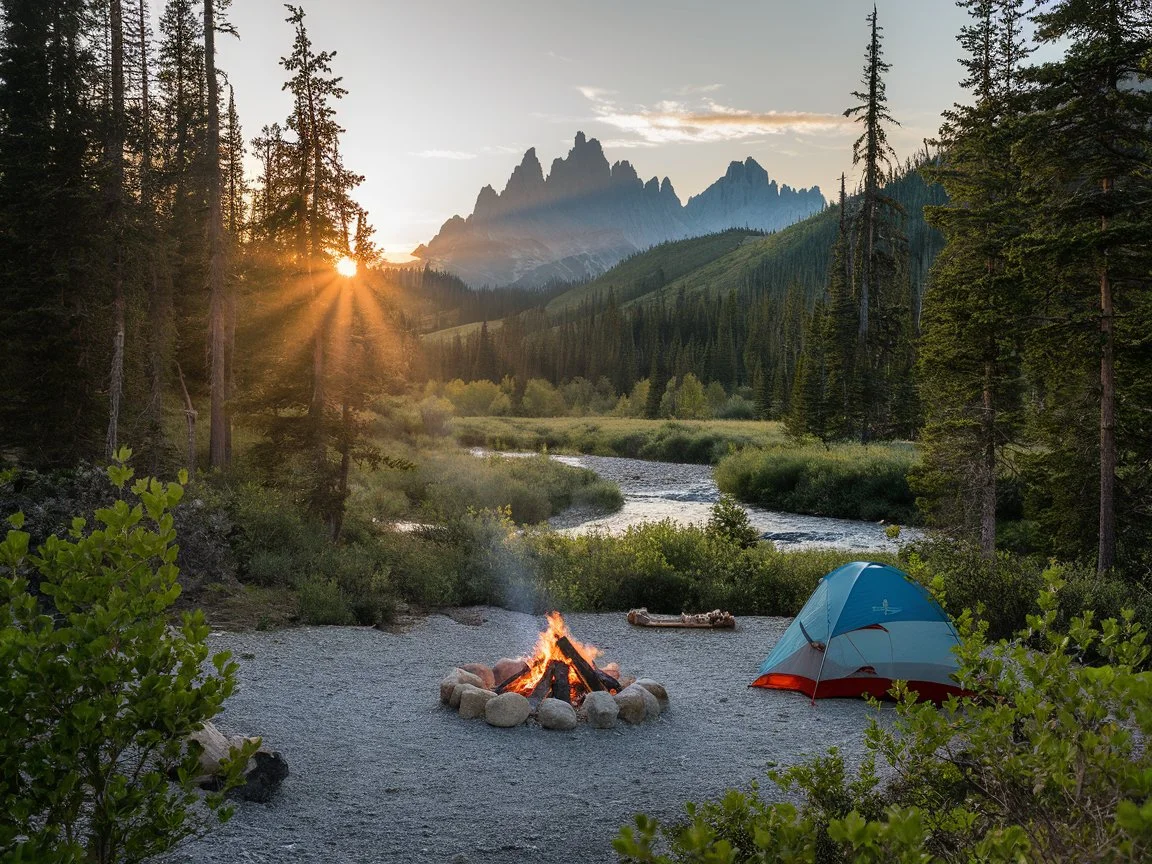
Introduction
Camping in the wilderness is one of the most rewarding ways to disconnect from the hustle and bustle of modern life and reconnect with nature. Far from the noise of cities and the glow of screens, wilderness camping offers a chance to immerse yourself in the beauty of the natural world. Whether you’re sleeping under a canopy of stars, waking up to the sound of birdsong, or cooking over a crackling campfire, the experience is both grounding and rejuvenating.
Beyond the sheer joy of being outdoors, wilderness camping provides numerous physical, mental, and emotional benefits. It’s an opportunity to breathe fresh air, stretch your legs on scenic hikes, and challenge yourself to live simply. Mentally, it’s a chance to reset, reduce stress, and gain perspective. Emotionally, it fosters a deep appreciation for the environment and a sense of accomplishment from self-reliance.
This guide will walk you through everything you need to know to plan and enjoy a successful wilderness camping trip. From choosing the perfect campsite and packing essential gear to practicing Leave No Trace principles and staying safe, we’ve got you covered. So grab your gear, lace up your boots, and get ready to explore the great outdoors.
1. Choosing the Right Campsite
Selecting the right campsite is crucial for a safe and enjoyable wilderness camping experience. Here’s how to find the perfect spot:
- Finding the Perfect Spot:
- Look for flat, dry ground free of rocks and roots. Avoid low-lying areas that could flood during rain.
- Ensure the site is at least 200 feet from water sources to protect ecosystems and comply with Leave No Trace principles.
- Check for natural windbreaks like trees or boulders to shield your tent from strong winds.
- Types of Campsites:
- Backcountry Campsites: Remote and undeveloped, these sites require hiking or paddling to reach. They offer solitude and a true wilderness experience.
- Primitive Campsites: These sites may have basic amenities like fire rings or pit toilets but are still relatively secluded.
- Developed Campgrounds: These sites offer amenities like picnic tables, potable water, and restrooms. They’re ideal for beginners or those who prefer more comfort.
- Considerations:
- Water Sources: Ensure you have access to clean water or bring a reliable filtration system.
- Shelter: Choose a site with natural shelter or bring a sturdy tent to protect against the elements.
- Wildlife Safety: Avoid areas with signs of wildlife activity, such as bear tracks or fresh scat. Store food properly to prevent attracting animals.
- Weather: Check the forecast and choose a site that offers protection from rain, wind, or extreme temperatures.
2. Essential Camping Gear
Having the right gear is essential for a comfortable and safe wilderness camping trip. Here’s what you’ll need:
- Shelter:
- Tents: Choose a lightweight, weatherproof tent that suits the season and terrain.
- Hammocks: Ideal for warm, dry climates, hammocks are lightweight and easy to set up.
- Tarps: Use a tarp as a groundsheet or to create additional shelter from rain.
- Sleeping Systems:
- Sleeping Bags: Select a bag rated for the expected temperatures. Down bags are lightweight and warm, while synthetic bags perform better in wet conditions.
- Sleeping Pads: Insulate yourself from the cold ground and add comfort with a foam or inflatable sleeping pad.
- Cooking Gear:
- Stoves: Lightweight backpacking stoves are ideal for cooking meals. Choose between canister, liquid fuel, or wood-burning stoves.
- Pots and Utensils: Bring a compact pot, spork, and mug for cooking and eating.
- Food Storage: Use bear canisters or hang food in a bear bag to keep it safe from wildlife.
3. Leave No Trace Principles
Practicing Leave No Trace principles ensures that you minimize your impact on the environment and preserve the wilderness for future generations.
- What is Leave No Trace?:
- Leave No Trace is a set of seven principles designed to promote responsible outdoor ethics.
- How to Minimize Your Impact:
- Plan Ahead: Research regulations, weather, and terrain before your trip.
- Travel and Camp on Durable Surfaces: Stick to established trails and campsites.
- Dispose of Waste Properly: Pack out all trash, leftover food, and litter.
- Leave What You Find: Avoid picking plants or disturbing wildlife.
- Minimize Campfire Impact: Use a camp stove for cooking and keep fires small.
- Respect Wildlife: Observe animals from a distance and never feed them.
- Be Considerate of Others: Keep noise levels down and respect other campers’ space.
- Waste Disposal:
- Use biodegradable soap and dispose of wastewater at least 200 feet from water sources.
- Dig a cathole 6-8 inches deep for human waste and pack out toilet paper.
4. Building a Safe and Comfortable Campfire
A campfire can be a source of warmth, light, and comfort, but it must be built and managed responsibly.
- When & Where to Build Fires Safely:
- Check local regulations and fire bans before starting a fire.
- Use established fire rings or build a mound fire on a durable surface.
- Building the Fire:
- Gather small twigs, dry leaves, and larger pieces of wood.
- Use the teepee or log cabin method to build your fire.
- Extinguishing Your Fire:
- Pour water over the fire, stir the ashes, and repeat until the fire is cold to the touch.
5. Wilderness Cooking Tips
Cooking in the wilderness can be simple and enjoyable with the right techniques.
- Quick & Easy Meals:
- Pack lightweight, non-perishable ingredients like pasta, rice, and dehydrated meals.
- Campfire Cooking:
- Use a grill grate or skewers for roasting meat and vegetables.
- Food Storage:
- Store food in bear-proof containers or hang it from a tree at least 10 feet off the ground.
6. Planning for Safety and Emergencies
Safety should always be a priority when camping in the wilderness.
- Emergency Kits:
- Include a first-aid kit, fire starter, multi-tool, and emergency blanket.
- Wildlife Awareness:
- Make noise to avoid surprising animals and carry bear spray in bear country.
- Navigation and Communication:
- Bring a map, compass, and GPS device. Consider a satellite communicator for remote areas.
7. Making the Most of Your Wilderness Experience
Wilderness camping is about more than just survival—it’s about enjoying and appreciating nature.
- Immersing Yourself in Nature:
- Take time to sit quietly and observe your surroundings.
- Outdoor Activities:
- Go hiking, fishing, or stargazing to enhance your experience.
- Leave No Trace Enjoyment:
- Respect the environment and leave it as you found it.
Conclusion
Camping in the wilderness is an opportunity to challenge yourself, connect with nature, and create lasting memories. By choosing the right campsite, packing essential gear, and practicing Leave No Trace principles, you can ensure a safe and enjoyable trip. So venture into the wild, embrace the simplicity of outdoor living, and discover the beauty of the natural world. Remember, the wilderness is calling—will you answer?
Cabin Mountain – see why mountain-cabins are the ultimate escape from city life in our guide.

